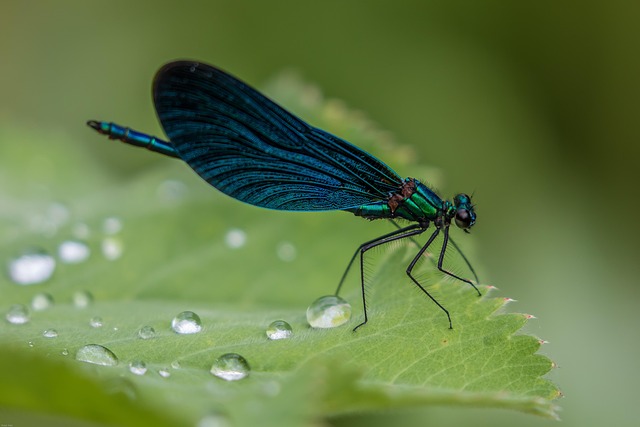The pest control industry is transitioning towards eco-friendly pest infestation inspection services to meet growing environmental awareness and consumer demand for sustainable practices. Professional inspectors now employ advanced technologies and natural methodologies, avoiding toxic chemicals and disruptive procedures. Services include termite inspection, rodent control, bed bug detection, and ant management, using non-invasive techniques like thermal imaging, pheromone traps, and environmental sampling to preserve structures' integrity while maintaining healthy environments. These methods cater to both home pest inspection and commercial pest inspection needs.
In today’s eco-conscious world, the demand for effective yet environmentally friendly pest infestation inspection services is on the rise. Traditional methods often rely on harmful chemicals and disruptive processes, sparking a need for sustainable alternatives. This article explores innovative eco-friendly techniques revolutionizing professional pest detection services, including termite, rodent, bed bug, and ant infestation inspections. By integrating green practices, we can achieve optimal results while minimizing disruption to homes, businesses, and the environment.
Understanding the Need for Eco-Friendly Inspection Techniques
In today’s world, where environmental consciousness is on the rise, the demand for eco-friendly pest control and inspection services has never been higher. Traditional methods of pest infestation detection often rely on toxic chemicals and disruptive procedures, causing harm to both the environment and building occupants. This has prompted a shift towards more sustainable practices, especially in the residential and commercial sectors. For instance, professional pest inspection companies are now embracing innovative techniques that minimize disruption while still ensuring thorough assessments for common pests like termites, rodents, bed bugs, and ants.
The need for eco-friendly inspection is particularly crucial in the context of pest infestation services. By adopting non-toxic methods, these professionals can offer comprehensive home or commercial pest detection services without posing health risks to clients, employees, or the local ecosystem. This approach not only aligns with environmental regulations but also caters to consumers’ growing preference for green solutions. As a result, many reputable pest control businesses are integrating advanced technologies and natural methodologies into their inspection processes, ensuring both effectiveness and ecological responsibility.
Integrating Sustainable Practices in Pest Infestation Inspection Services
Incorporating sustainable practices into pest infestation inspection services is a growing trend in the industry, driven by a conscious shift towards eco-friendly solutions. Professional pest inspectors are now embracing methods that minimize disruption to both properties and the environment. Traditional pest detection services often rely on chemical treatments, but these can leave residuals and contribute to ecological imbalances. In response, many companies are offering greener alternatives for home and commercial pest inspection, including termite inspections, rodent infestation checks, and bed bug examinations.
By adopting eco-friendly practices, inspectors can effectively identify and mitigate pest issues without resorting to harsh chemicals. For instance, they might use non-toxic baits or traps, visual inspections with high-tech equipment, or pheromone monitoring systems for ant infestations. These methods not only ensure the health and safety of residents but also promote biodiversity. Furthermore, integrating sustainable practices can enhance the professional reputation of pest inspection firms, appealing to environmentally conscious clients who seek responsible solutions for their property’s well-being.
Key Components of a Professional Pest Detection Service
A professional pest detection service is a multifaceted operation designed to identify and mitigate various types of pest infestations, from termites and rodents to bed bugs and ants. The key components of such a service ensure comprehensive coverage and minimal disruption. First and foremost, it involves a detailed inspection process using advanced techniques like thermal imaging and moisture meters for termite and water damage detection. These tools allow inspectors to uncover hidden issues that may indicate pest activity without causing unnecessary distress to the property.
Additionally, a professional pest inspector will employ a combination of non-invasive methods, including visual examinations, pheromone traps, and environmental sampling. This approach is particularly crucial in commercial settings where regular and discreet inspections are essential for maintaining a healthy and safe workspace. By integrating these diverse strategies, pest infestation inspection services deliver effective solutions while prioritizing the least invasive methods, thereby preserving the integrity of structures and minimizing the disturbance to occupants and businesses.
Best Practices for Termite, Rodent, Bed Bug, and Ant Infestation Inspections
When conducting eco-friendly inspections for termite, rodent, bed bug, and ant infestations, professionals should prioritize non-invasive techniques to minimize disruption while ensuring thorough pest detection services. For termite inspection services, using canine scent detection or visual inspections with specialized equipment is effective and environmentally friendly, avoiding the need for chemical treatments or invasive digging. In commercial pest inspection or home pest inspection scenarios, these methods can be easily implemented without causing disturbance.
For rodent infestation inspection, setting up sticky traps and using non-toxic baits is a preferred approach over traditional pesticide use. Bed bug inspections should involve visual examination of common hiding spots and collecting samples for laboratory analysis to confirm presence without relying on potentially harmful chemicals. Similarly, ant infestation inspections can be achieved through the use of pheromone traps or non-repellent insect growth regulators, providing effective pest control while maintaining a safe and healthy environment.
Adopting eco-friendly inspection techniques not only minimizes environmental impact but also ensures effective and efficient pest control. By integrating sustainable practices into pest infestation inspection services, professionals can offer comprehensive solutions without causing disruption. These methods are essential for both home and commercial pest detection services, promoting a healthier balance between human habitats and the natural world. With an emphasis on professional pest inspection, these techniques contribute to a more responsible and holistic approach to managing pests, making them indispensable in modern pest control practices.
